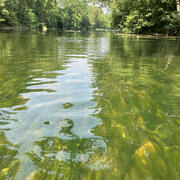This is our office.
These are our co-workers.
This is our rush hour.
Pacific Island Ecosystems Research Center
Research at the Pacific Island Ecosystems Research Center focuses on providing the scientific understanding and technologies needed to support and implement sound management and conservation of our Nation's biological resources occurring in Hawai'i and other Pacific island locations.





